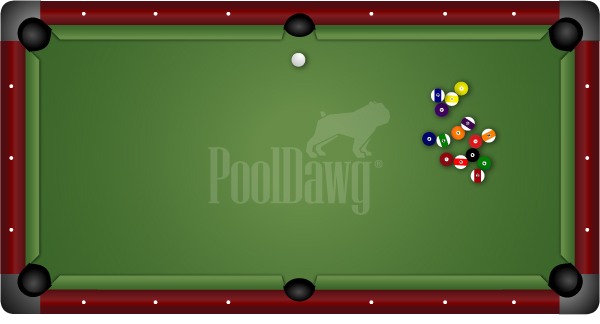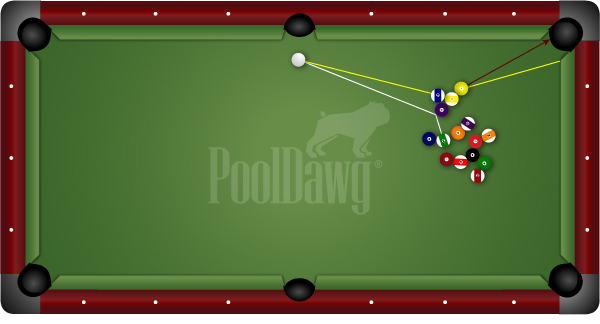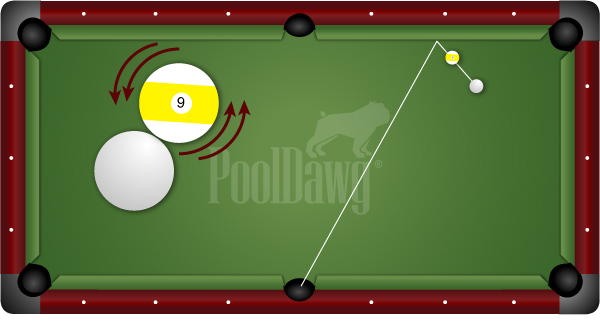That shot was DEAD!!
How many times have we heard this epic tale “How did that shot not go in? It was dead!”
Well in honor of the hauntingly close holiday of Halloween I thought we could talk about “dead shots” and how to guard against bringing them back to life as missed shots.
 Diagram 1
Diagram 1
In diagram 1 you can see setup during a game of 14.1. If closely inspected you can see that the 1 ball is “dead” for the corner pocket. Don’t be scared to shoot this, but be mindful of which ball you strike first so as to avoid the dreaded throw shot. If you look carefully you will notice that if you hit the 4 ball first the 1 ball will go straight for the pocket and you will continue your run, but if you get careless and figure the shot is dead no matter which ball you hit, you my friend are in danger.
 Diagram 2
Diagram 2
If you look at diagram 2 you can see what will happen to the 1 ball if you hit the 12 ball instead. The un-educated pool player would think “hey the balls are frozen and lined up, I can’t miss” but they would be wrong, and you are not them. What happens in this shot is if you hit the 12 ball first, the weight of the 2 balls combined with friction between the 3 ball and the 1 ball will cause the 1 ball to throw slightly towards the end rail and away from the pocket.
 Diagram 3
Diagram 3
In our next horrifyingly dead shot we see a bank shot in a game of 9 ball. “there is no way he can miss this, it’s a dead bank”. Sadly we have all felt the sting of those words as the so called un-missable shot misses it’s mark. You see the tricky thing about bank shots is there is no such thing as an un-missable bank shot. When people say this they are often referring to the angle of the shot in relationship to the rail and the cue ball. However this is only one of the 3 major variables involved in shooting a bank shot.
- Speed plays a very important part in every bank shot. Set a few up and hit them with different speeds, notice you will get a different result every time.
- Spin is the second variable that takes place during a bank shot, but not usually in the way most people think. The cue ball does not impart much spin to the object ball on contact, however friction does. When the cue ball contacts the object ball it sticks to it slightly and turns it like a gear (see diagram 3) this is often referred to as friction induced spin, or collision induced spin. This is very helpful when trying to play cross over banks or when banking shots where the angle is less than desirable.
In closing, don’t be caught resurrecting those dead shots this Halloween. Use your head and don’t be scared to shoot.
Until next time
Mikey V.